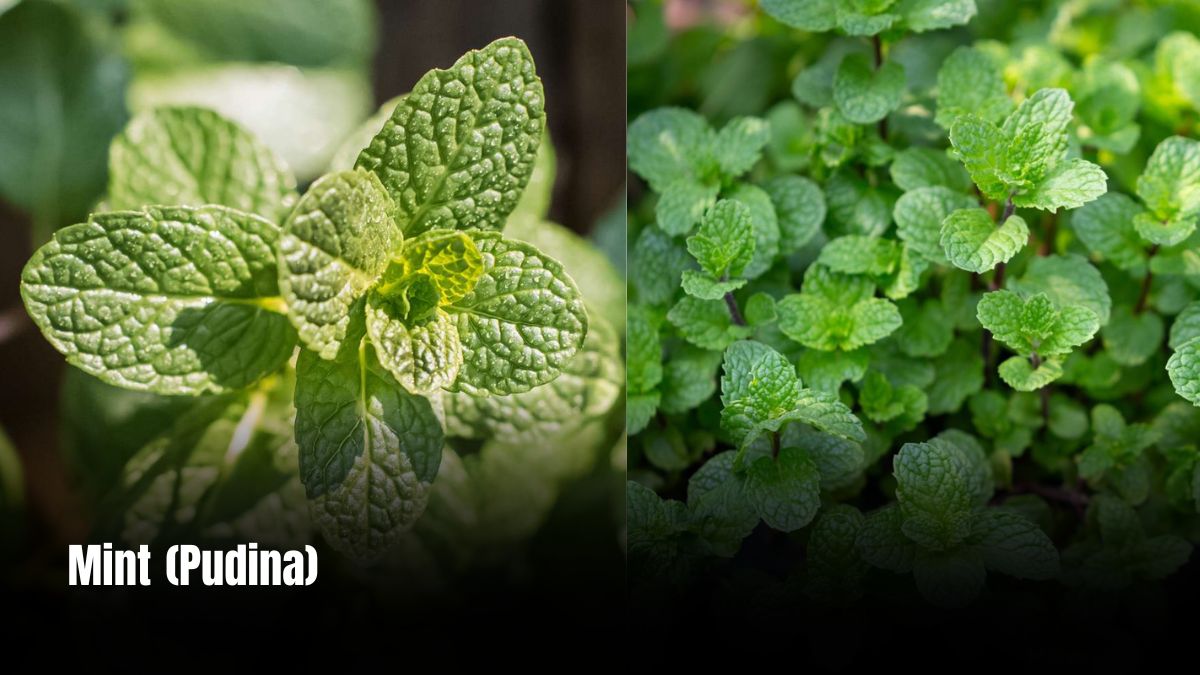Mint, commonly known as Pudina in India, is one of the most refreshing and aromatic herbs found in our kitchens. While most of us enjoy it in chutneys, drinks, and cooling summer recipes, very few people are aware of its lesser-known health benefits. Beyond its taste and fragrance, mint is packed with medicinal properties that can quietly support your health in surprising ways.
Let’s explore the nutritional value, hidden benefits, and the best ways to add this humble herb to your daily diet.
1. Nutritional Value of Mint
Though eaten in small quantities, mint is rich in important nutrients:
- Vitamin A – good for eye and skin health
- Vitamin C – boosts immunity and protects against infections
- Iron – supports healthy blood and energy
- Calcium and Magnesium – improve bone and muscle function
- Antioxidants – protect cells from damage
- Natural plant compounds like menthol and rosmarinic acid
According to a 2020 review published in Frontiers in Pharmacology, mint contains antimicrobial, anti-inflammatory, and antioxidant compounds that may protect against several chronic conditions.
2. Unknown Health Benefits of Mint (Pudina)
Relieves Headache and Mental Fatigue
The menthol in mint leaves provides a cooling effect and can help relieve tension headaches, especially when applied as oil on the forehead or temples. It also promotes mental alertness and reduces tiredness.
Soothes Respiratory Problems
Mint leaves act as a natural decongestant. Inhaling steam with crushed mint or drinking warm pudina water may help ease blocked nose, sore throat, asthma, or cold-related symptoms.
Reduces Skin Itching and Acne
Mint has antibacterial properties that can fight skin infections, acne, and rashes. A paste made from fresh pudina leaves can be applied to itchy or oily skin to soothe and cool the area.
Supports Oral Health
Mint is widely used in toothpaste and mouthwash for a reason. Its antibacterial action helps prevent bad breath, reduce gum infections, and keeps the mouth fresh and clean.
Improves Digestion and Reduces Bloating
Mint stimulates digestive enzymes. Drinking mint water or eating mint chutney with meals can help reduce gas, bloating, and support smoother digestion.
May Help in Managing PCOS and Hormonal Balance
According to a study published in the Journal of Complementary and Integrative Medicine (2017), spearmint (a type of mint) may help reduce excess male hormones in women and help with symptoms of PCOS like acne or facial hair.
3. How to Include Mint in Your Diet
Here are easy and healthy ways to enjoy mint every day:
- Fresh Pudina Chutney – Combine with coriander, lemon, and spices
- Mint Water or Detox Drink – Soak mint leaves in water overnight
- Mint Tea – Boil leaves with ginger or honey
- Salads and Raita – Sprinkle chopped mint for taste and freshness
- Mint Face Pack – Use crushed leaves with honey for skin care
- Steam Therapy – Add pudina to boiling water and inhale for sinus relief
Use fresh, washed mint leaves and avoid overboiling, as it may reduce its nutritional value.
4. Who Should Not Eat Mint (Pudina)?
- People with acid reflux (GERD): Mint may relax the stomach valve and worsen symptoms.
- Pregnant women (in large amounts): Overconsumption may trigger uterine activity; use moderately.
- Those with mint allergies: If you feel itching, swelling, or skin irritation, stop use.
- Patients on blood pressure medication: Mint may slightly lower blood pressure — consult your doctor if you’re on related medications.
Conclusion
Mint (Pudina) is more than just a flavoring herb. Its hidden powers — from easing headaches and digestion to protecting your skin and hormones — make it a true natural healer. Affordable, accessible, and easy to grow at home, mint is a simple step toward better daily health. So, don’t just use it for taste — use it for wellness too.
